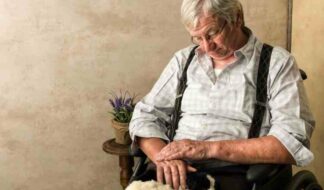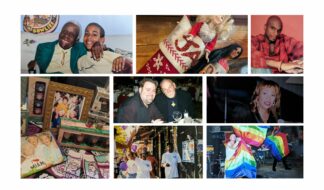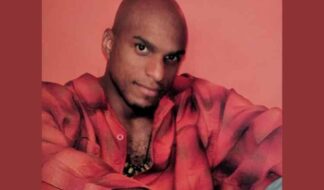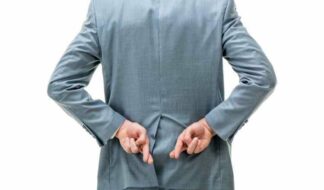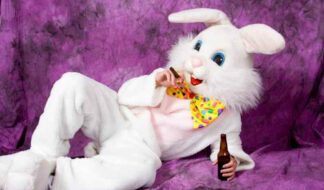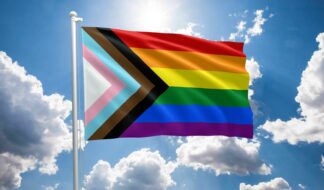BY Chris Crain
ViewPoint
A new poll showing Hillary Clinton with a big lead
among LGBT voters raises fundamental questions
about who 'we' are and whose voice matters.
With the scars still fresh from the bruising debate over whether to drop transgender protections from the Employment Non-Discrimination Act, a new poll showing Hillary Clinton leading her Democratic rivals is raising new questions about just who is "we" in the "LGBT community."
The presidential primary survey was conducted by Hunter College in New York and found that among likely gay, lesbian and bisexual primary voters, Clinton led with 63 percent, almost triple the support for Barack Obama (22 percent) and far eclipsing John Edwards (7 percent) and Dennis Kucinich (6 percent).
The percentages for Obama and Edwards weren't too far afield from their national averages over the same period, and Kucinich would be expected to do somewhat better with gays since he is the only candidate in the survey who supports full marriage equality.
Clinton would also be expected to poll well among gays, since she has a deep well of sympathy and support as a female candidate and due to her years of battling the religious right. She has also nailed down many more high-profile lesbian and gay endorsements than her rivals, from tennis great Billie Jean King and political power broker Hillary Rosen to black gay leader H. Alexander Robinson.
Still, the GLB percentage for Clinton in the Hunter College poll was markedly higher than among Democrats generally, raising quite a few eyebrows. Even further surprises awaited those who looked behind the survey into the demographics of who was questioned.
First there was the gender breakdown, which showed 51 percent female to 49 percent male. That might sound about right, since it mirrors general population statistics, but it's not necessarily the case that homosexuality occurs in equal percentages among the genders.
In fact, most demographic information from LGBT groups and the readership of LGBT publications shows "we" are about 60 to 70 percent male. That's borne out intuitively when you consider the turnout at most GLBT events and the number of bars and businesses catering to gay male vs. lesbian consumers.
Even more surprising was the breakdown by sexual orientation, with fully half of the respondents identifying as bisexual. Again, that's dramatically different than what's typical among GLBT mailing lists or publication readership, which puts bisexuals in the teens percentage-wise.
Some light can be shed on the mystery by considering how the Hunter College poll was conducted. It was not a random telephone survey but instead was taken online by those who had previously self-identified as lesbian, gay or bisexual to Knowledge Networks, which recruits sample groups for all sorts of consumer and academic surveys.
If Knowledge Networks simply culls from its general consumer pool those who self-identified as gay, lesbian or bisexual, then the more fluid nature of female sexuality would be expected to show up sin higher numbers of female bisexuals, skewing both the gender and sexual orientation percentages.
But do we consider those female bisexuals who date and marry the opposite sex as "part of the LGBT community," at least when it comes to sampling our views on presidential candidates or, as we saw last month, deciding strategy for winning federal workplace protections?
The same questions came up in that ENDA debate, when some pointed out that transgender folks represent only a tiny percent of the "LGBT community" – about 1 percent by most reckonings – and most transsexuals and cross-dressers self-identify as heterosexual. Others took the opportunity to take issue with the whole idea of the "GLBT community" – or the "LGBTQLMNOPXYZ" as some have called it – as an artificial construct of activists never really accepted by gay and lesbian folk generally.
A controversial poll taken in October for the Human Rights Campaign, which showed some 70 percent of LGBT respondents still supported ENDA even after transgender protections were removed, was also conducted by Knowledge Networks and showed the same curious gender breakdown. HRC, which also paid for the Hunter College survey but wasn't involved in conducting it, was slow to release the demographic data on its ENDA poll.
Some suspect the nation's largest LGBT group was skewing the results of both surveys to support Clinton, largely viewed as the group's favorite, as well as its decision to reverse course and back the gay-only ENDA. That reads way too much into things, but does reflect the huge credibility gap HRC now suffers with many politically active gays.
The more interesting question is much more fundamental, and much more difficult to answer. Just who "counts" when we say "gay" or "GLB" or even "GLBT"? And if we can't decide who we are, how do we know what "we" want from our movement?
